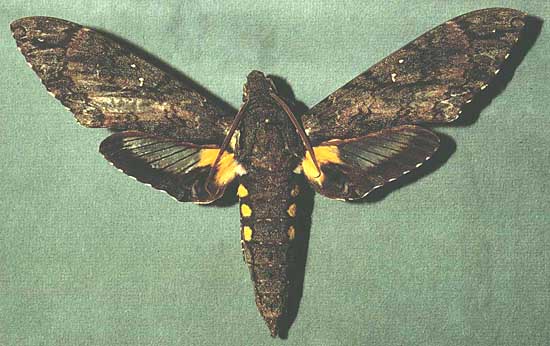
Cocytius antaeus male from Costa Rica, courtesy of Dan Janzen.
This site has been created by Bill Oehlke.
Comments, suggestions and/or additional information are welcomed by Bill.
TAXONOMY:
Family: Sphingidae, Latreille, 1802 |
|
|
Updated as per More, Kitching and Cocucci's Hawkmoths of Argentina 2005, October, 2007 Updated as per All Leps Barcode of Life, October, 2007 Updated as per http://www.pybio.org/SPHINGINAE.htm (Paraguay), October 2007 Updated as per http://biological-diversity.info/sphingidae.htm (Belize), October 2007 Updated as per Fauna Entomologica De Nicarauga, November 2007 Updated as per personal communication with Ezequiel Bustos (Aguas Blancas, Salta, Argentina, 405m); December 2009 Updated as per Sphingidae (Lepidoptera) de Venezuela, Compilado por: Maria Esperanza Chacon; December 2009 Updated as per SHILAP publication: Lista de Sphingidae del Uruguay, September, 2010; Msc Gabriela Bentancur Viglione; January 31, 2011 Updated as per personal communication with Ben Trott (Playa del Carmen, Quintana Roo, Mexico); February 27, 2012; April 10, 2012 Updated as per personal communication with Sergio D. Rios Diaz in CATOLOGO DE LOS SPHINGIDAE (INSECTA: LEPIDOPTERA) DEPOSITADOS EN EL MUSEO NACIONAL DE HISTORIA NATURAL DEL PARAGUAY; sent to me in July 2014 by Sergio D. R�os D�az. Updated as per personal communication with Ezequiel Bustos (Shilap revta. lepid. 43 (172) diciembre, 2015, 615-631 eISSN 2340-4078 ISSN 0300-5267), January 4, 2016 Updated as per personal communication with Francierlem Oliveira (Extremoz, Rio Grande do Norte, Brazil); May 14, 2016 Updated as per personal communication with Claudia E. Alexandre Pegoraro (Balnearia Camboriu, Santa Catarina, Brazil, June 27, 2016); December 17, 2016 Updated as per personal communication with Pacheco Souza (mature larva, Sao Paulo, Brazil, April 16, 2016); March 15, 2017 Updated as per personal communication with Chris Conlan (mature larva, San Diego County, California, 2018); October 23, 2018 Updated as per personal communication with Anna and Frank West (Bahia and Rondonia, Brasil), January 16, 2021 Updated as per Hawk-moths (Lepidoptera: Sphingidae) of Trinidad, West Indies: an illustrated and annotated list; Matthew J.W. Cock; March 31, 2022 |

This site has been created by Bill Oehlke.
Comments, suggestions and/or additional information are welcomed by Bill.
TAXONOMY:
Family: Sphingidae, Latreille, 1802 |
In October 2018 Chris Conlan sends documentation from San Deigo County, California. Chris writes, "Just thought I would report something rather interesting. I found several larvae of Cocytius antaeus feeding on the cherimoya trees in my backyard and in the yard of a friend who lives about 15 miles west of me. I also had reports of them from another friend last summer who lives several miles to the south but was never able to confirm with actual specimens. Looks like this species may be extending its range into southern California since many folks have backyard cherimoya trees. It also appears they are not really attracted to light as I run a MV light on my back deck most nights of the year and I have gotten many Mexican strays but never seen a Cocytius here until I found those larvae."
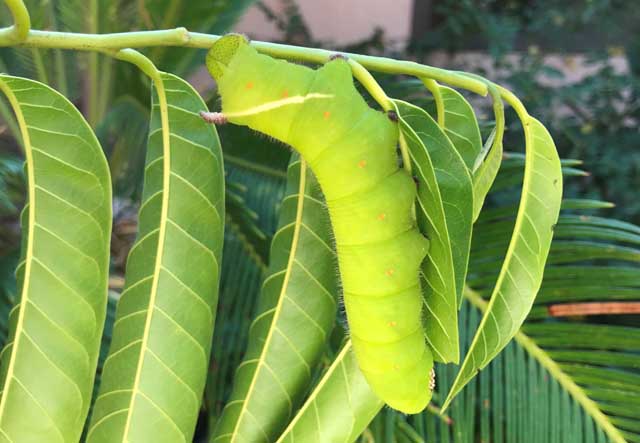
Cocytius antaeus final instar, Escondido, San Diego County, California,
on cherimoya, 2018, courtesy of Chris Conlan.
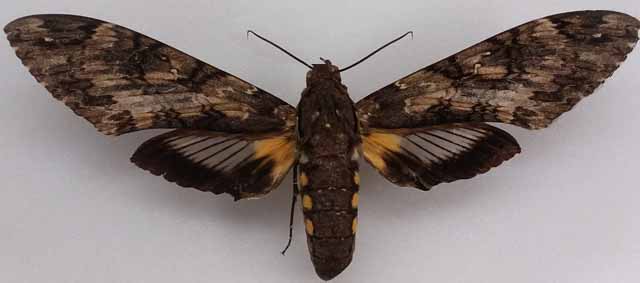
Cocytius antaeus 170mm, Brasil: Bahia: Camacan: Instituto Uirocu,
September, 2011, Anna and Frank West.
Cocytius antaeus medor flies in
Belize: Corozol, Cayo, Stann Creek, Toledo;
Guatemala: Izabal (JM);
Nicaragua: Leon, Managua, Granada, probably
Carazo, Mayasa, Rivas;
Costa Rica: Guanacaste, Limon, Heredia; and
Puntarenas, Alajuela, San Jose, Carthage.
In South America this species flies in
Venezuela: Aragua, Bolivar, Guarico, , Miranda, Monagas;
Trinidad, unconfirmed but prrobably as a stray;
Ecuador;
Peru;
Bolivia: Santa Cruz: Andres
Ibooez, Terebinto; Ichilo, La Vebora;
La Paz: Murillo, R�o Zongo, 750m; Santa Cruz: Sarah, 450m;
Brazil: Rio Grande do Norte (FO); Sao Paulo (PS); Santa Catarina (CAP); Bahia and Rondonia (FAW); Jean Haxaire adds the following states:
Roraima, Amazonas, Para, Paraiba, Pernambuco, Alagoas, Minas Gerais, Rio de Janeiro, Parana, Rio Grande do Sul.
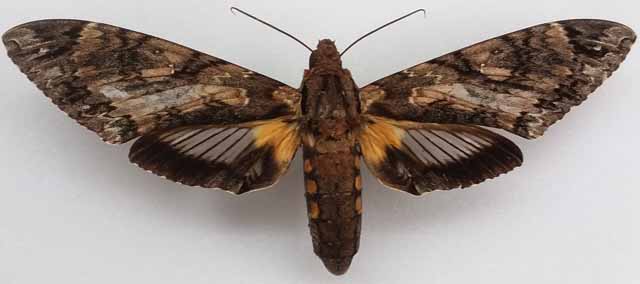
Cocytius antaeus 170mm, Brasil: Rondonia, 5km S of Caculandia,
November, 1991, Anna and Frank West.
Paraguay: Central;
northern Chile.
Ezequiel Nunez Bustos confirms this species in
Argentina: Misiones; Buenos Aires, Salta (405m EB), Chaco, Corrientes (EB), San Juan (EB), Entre Rios, Formosa, Tucuman;
Uruguay.
I suspect it is also in Colombia, Guyana, Suriname and French Guiana.
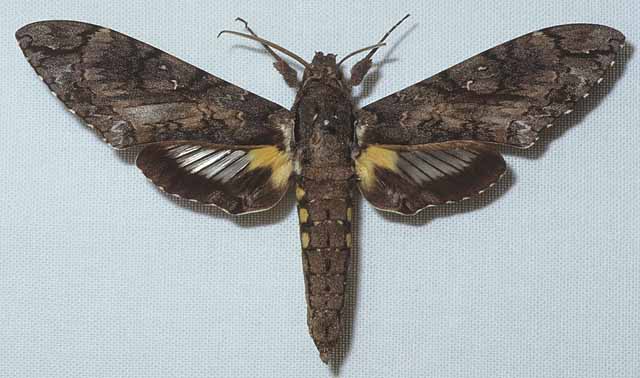
"Both wings undersides often with a conspicuous ochre-yellow wash.
"Hindwing upperside with transparent spaces long, that posterior to vein M1 obviously longer than the brown wing border is broad; these spaces incised distally as the border is dentate between the veins; a semitransparent patch that posterior to vein CuA2 anteriorly.
"MaleForetibia a little longer, midtibia clearly longer, and hindtibia a little shorter than their respective 1st tarsal segments. Foretarsus similar to that in Cocytius duponchel, but the 1st segment with only the external spines, the comb represented by just 1 or 2 apical spines, the other segments with a few more spines than in Cocytius duponchel.
"FemaleForetarsus with all 4 rows of spines, the comb of the 2nd, not so regular as in the male, and the spines directed more distad.Foretibia little longer, mid- and hindtibiae 1-2 mm. longer than their respective 1st tarsal segments." CATE
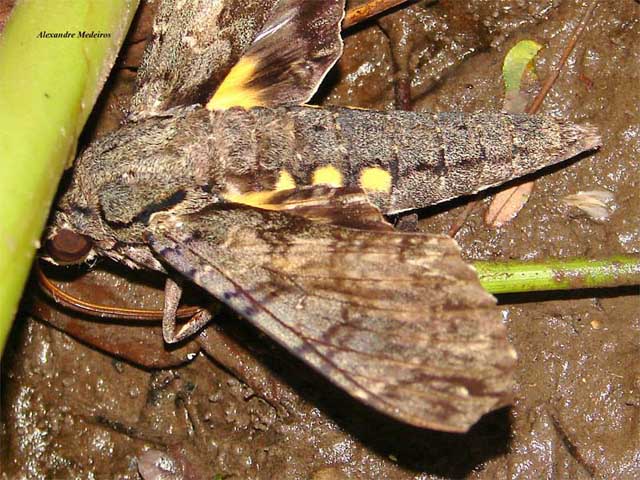
Cocytius antaeus, Balneario Camboriu, Santa Catarina, Brazil,
June 27, 2016, courtesy of Claudia E. Alexandre Pegoraro
In Bolivia specimens have been taken in March, October and December.
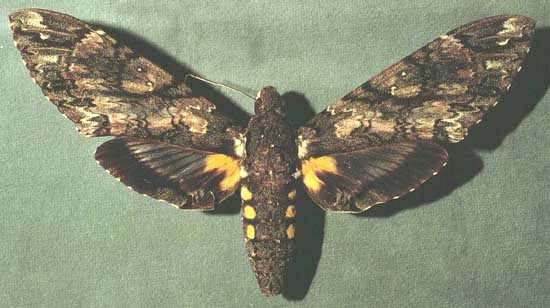
In the early instars larvae have white side slashes.
Jean Haxaire indicates the following Host plants: Annonaceae (Annona cherimolia, A. muricata, A. reticulata, A. squamosa, Guatteria sp., Oxandra sp., Sapranthus sp., Rollinia orthopetala, and Xylopia sp.).
Mature caterpillars are large ( 20.81 g) and have a horn at the rear end. In the last instars, larvae are uniform green with a dark purple center back line and a very sharp white posterior side slash with some dark green on both sides of it.
Larva feed on Custard apple (Annona glabra) and on Annona reticulata, Annona purpurea, Annona holosericea, and Rollinia membranacea, of the Annonaceae family.

Cocytius antaeus fourth instar, Costa Rica, courtesy of Dan Janzen.
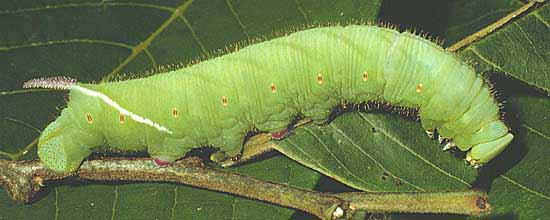
Cocytius antaeus fifth instar, Costa Rica, courtesy of Dan Janzen.
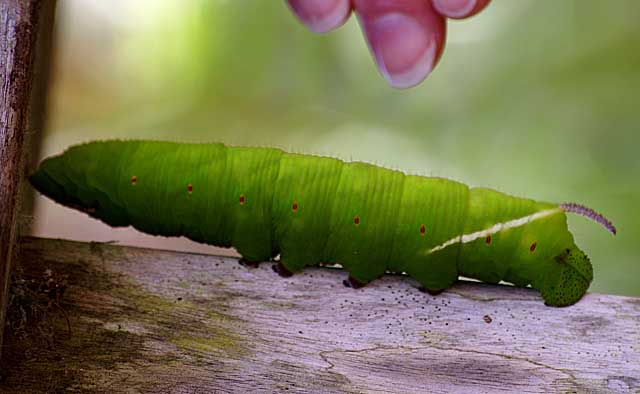
Cocytius antaeus, Collier County, Florida, courtesy of Daniel J. Marquis.
Moths emerge approximately 30 days after larvae pupate underground.The pupa has a big tongue loop like Manduca rustica | 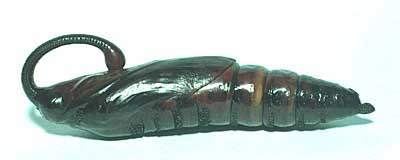 |
Larvae are subject to parasitization by members of Tachinidae family.
Ben Trott sends the following images from Quintana Roo, Mexico, and writes, "Cocytius antaeus (x16). Amazingly common, its foodplant, Annona, is quite scarce, so practically every plant hosts at least one larva. I have found four larvae and two eggs on one shrub. This species has six instars and annoints before pupating.
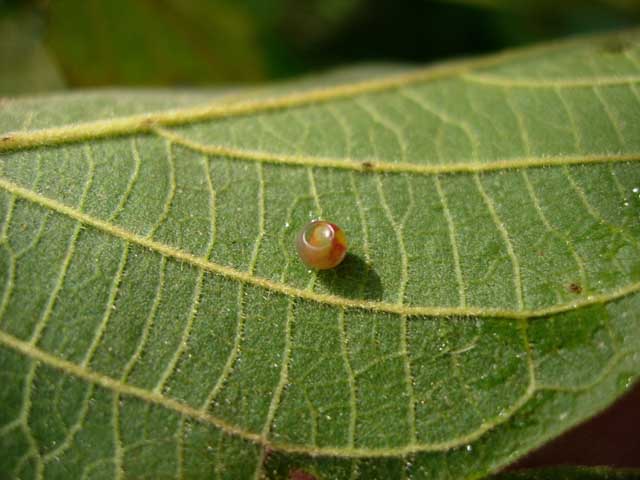
Cocytius antaeus egg, Playa del Carmen, Quintana Roo, Mexico,
courtesy of Ben Trott.
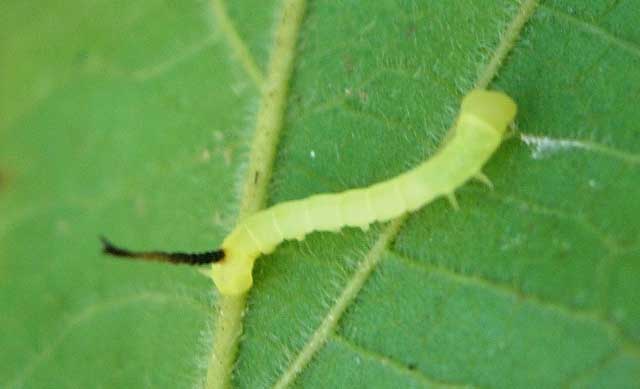
Cocytius antaeus first instar, Playa del Carmen, Quintana Roo, Mexico,
courtesy of Ben Trott.
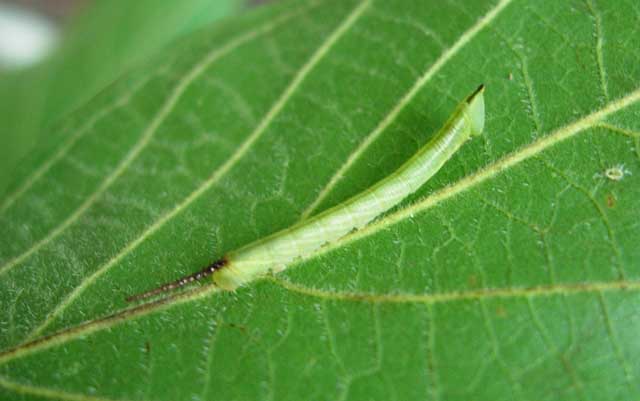
Cocytius antaeus second instar, Playa del Carmen, Quintana Roo, Mexico,
courtesy of Ben Trott.
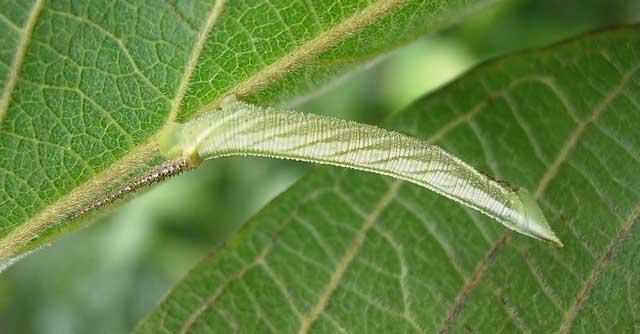
Cocytius antaeus third instar, Playa del Carmen, Quintana Roo, Mexico,
courtesy of Ben Trott.
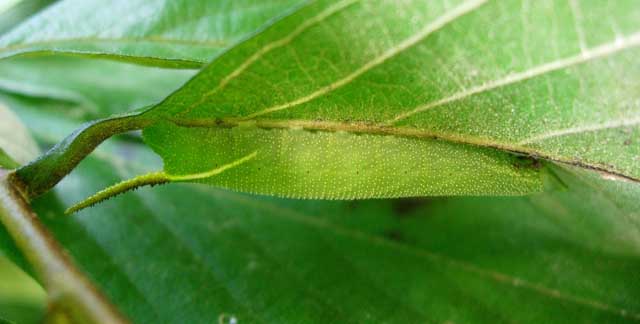
Cocytius antaeus fourth instar, Playa del Carmen, Quintana Roo, Mexico,
courtesy of Ben Trott.
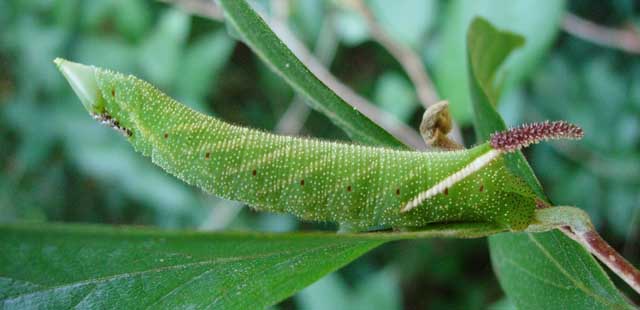
Cocytius antaeus fifth instar, Playa del Carmen, Quintana Roo, Mexico,
courtesy of Ben Trott.

Cocytius antaeus sixth instar, Playa del Carmen, Quintana Roo, Mexico,
courtesy of Ben Trott.
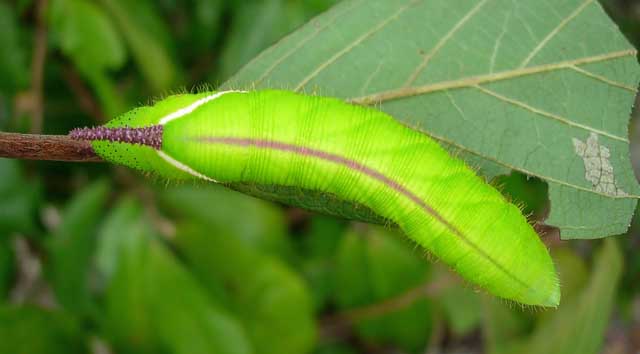
Cocytius antaeus sixth instar, Playa del Carmen, Quintana Roo, Mexico,
courtesy of Ben Trott.
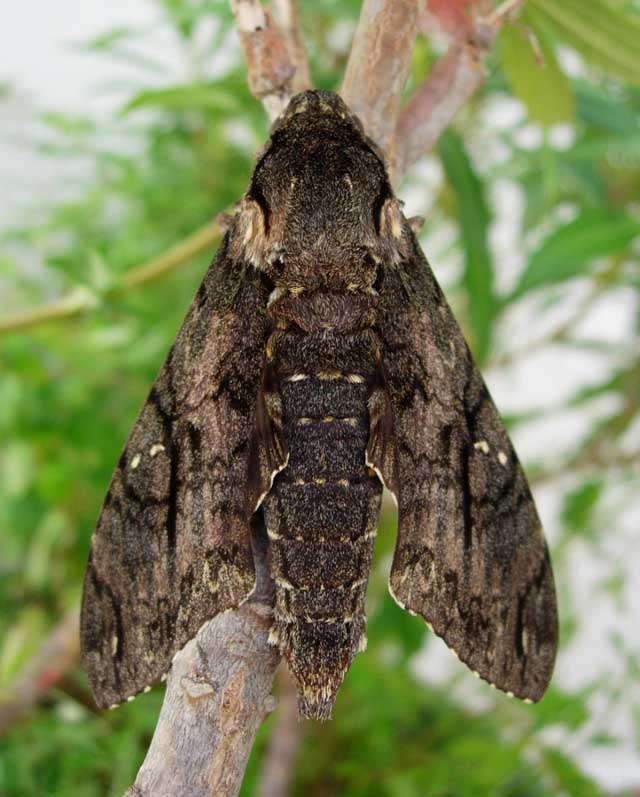
Cocytius antaeus, Playa del Carmen, Quintana Roo, Mexico,
courtesy of Ben Trott.
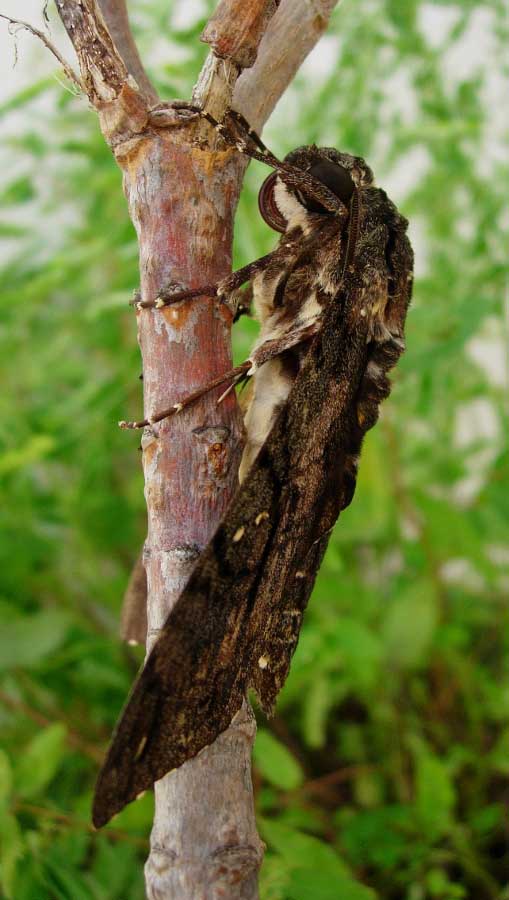
Cocytius antaeus, Playa del Carmen, Quintana Roo, Mexico,
courtesy of Ben Trott.
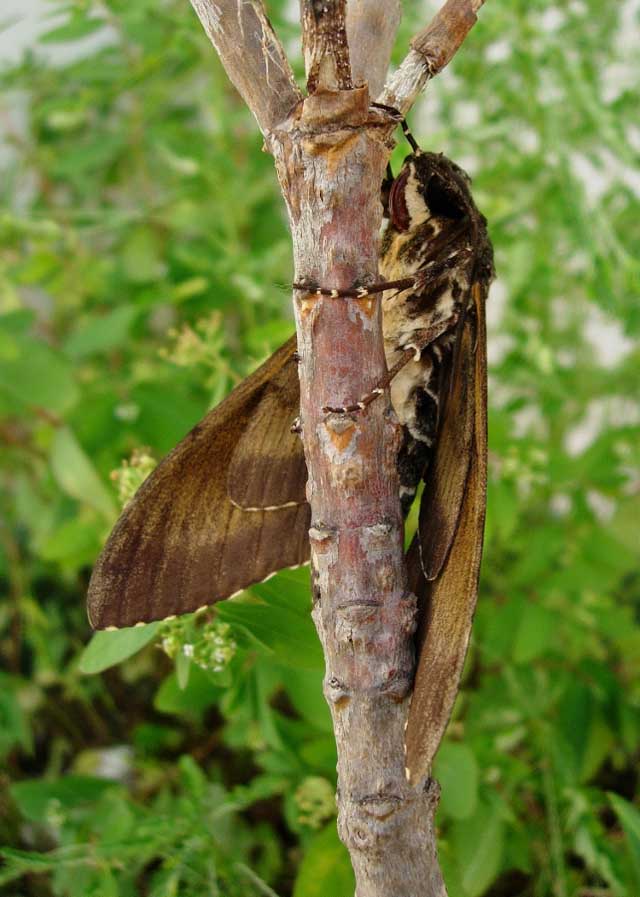
Cocytius antaeus, Playa del Carmen, Quintana Roo, Mexico,
courtesy of Ben Trott.
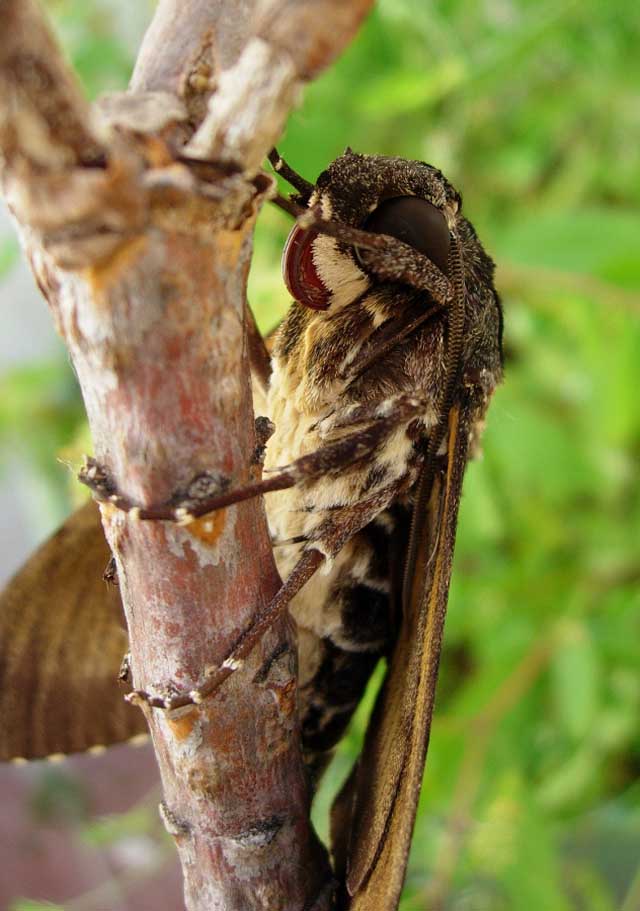
Cocytius antaeus, Playa del Carmen, Quintana Roo, Mexico,
courtesy of Ben Trott.
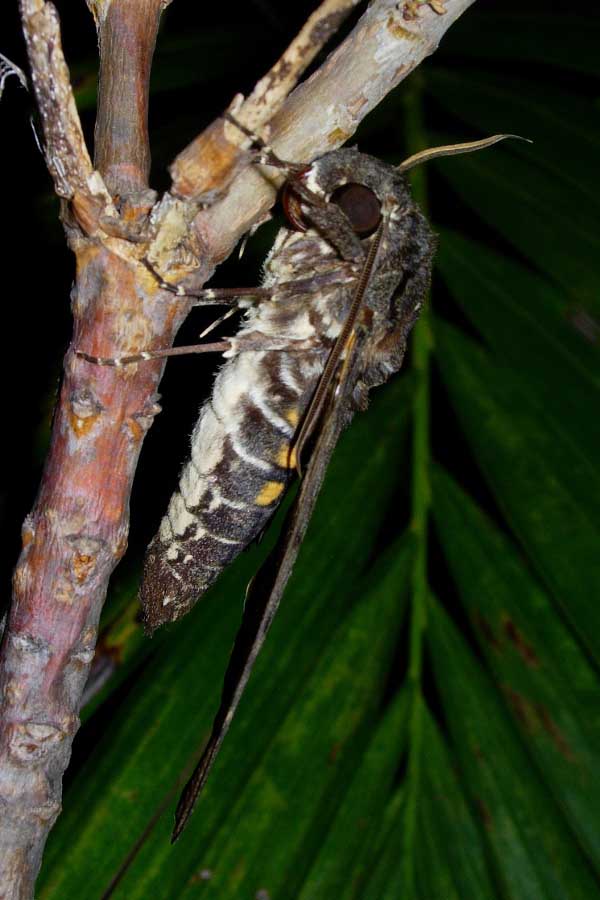
Cocytius antaeus, Playa del Carmen, Quintana Roo, Mexico,
courtesy of Ben Trott.
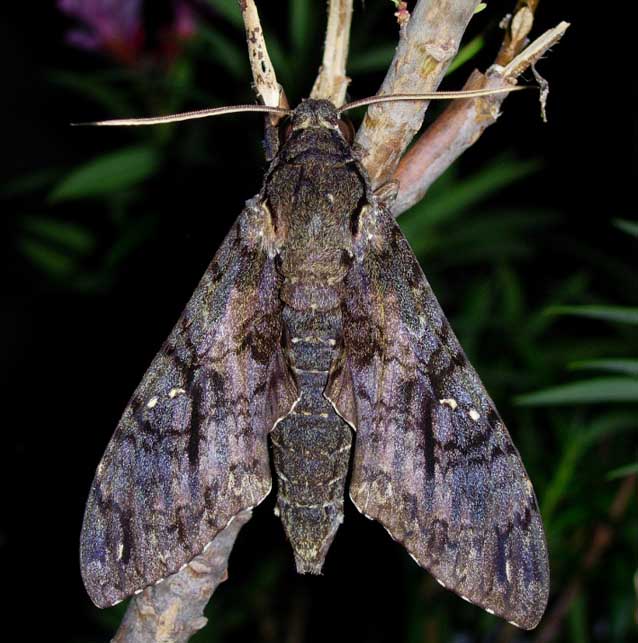
Cocytius antaeus, Playa del Carmen, Quintana Roo, Mexico,
courtesy of Ben Trott.
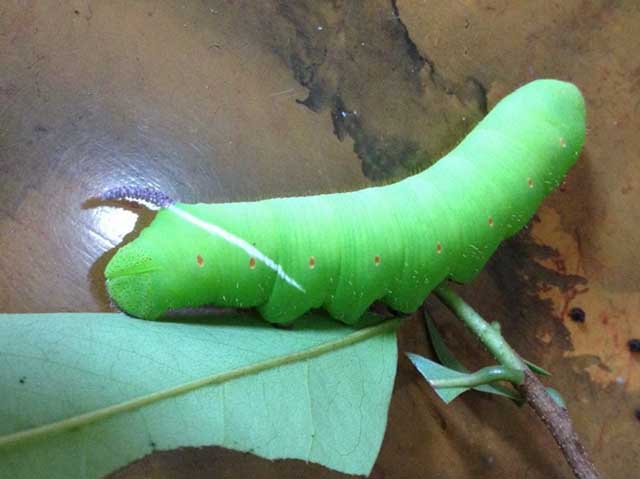
Cocytius antaeus final instar, Sao Paulo, Brazil,
April 16, 2016, courtesy of Pacheco Souza.
Use your browser "Back" button to return to the previous page.
Return to U. S.A. Table
Return to Sphingidae Index
Return to Sphingini Tribe
Use your browser "Back" button to return to the previous page.
This page is brought to you by Bill Oehlke and the WLSS. Pages are on space rented from Bizland. If you would like to become a "Patron of the Sphingidae Site", contact Bill.
Please send sightings/images to Bill. I will do my best to respond to requests for identification help.
Enjoy one of nature's wonderments: Live Saturniidae (Giant Silkmoth) cocoons.
 Show appreciation for this site by clicking on flashing butterfly to the left. The link will take you to a page with links to many insect sites. |